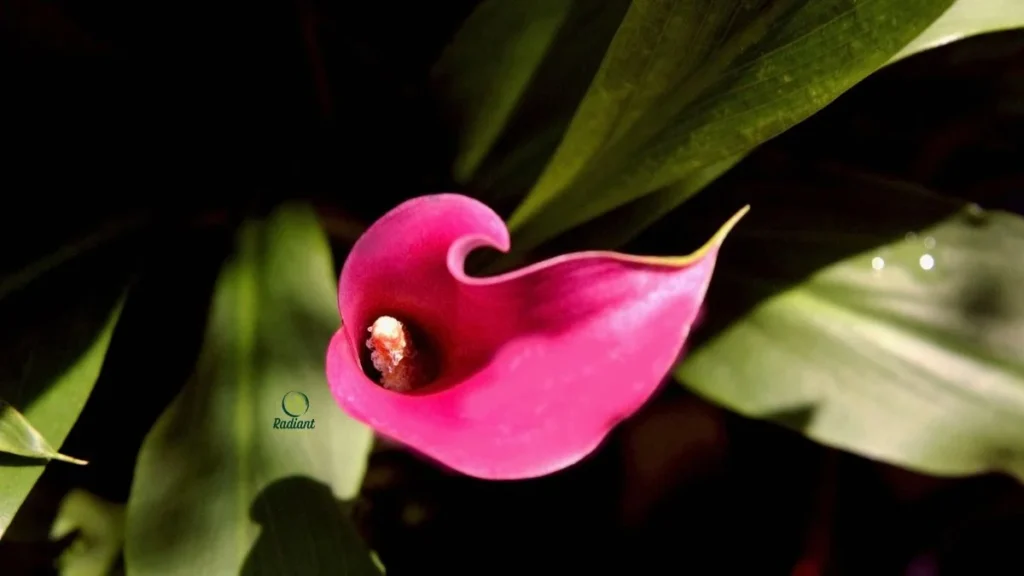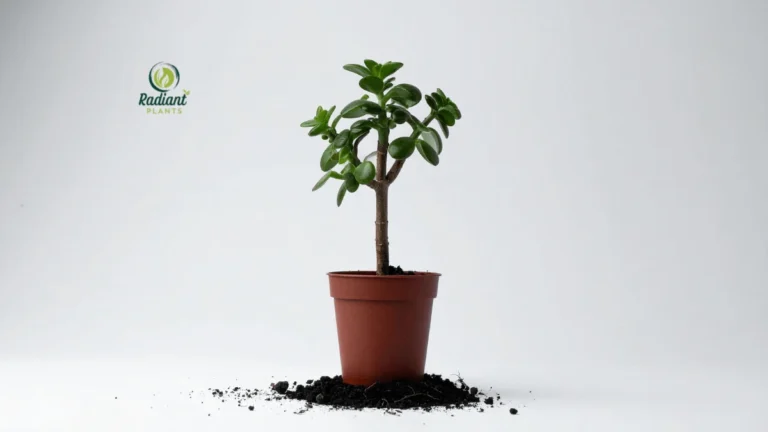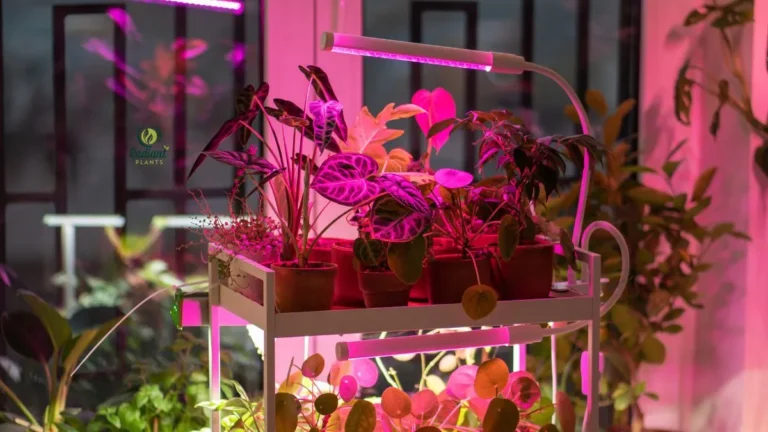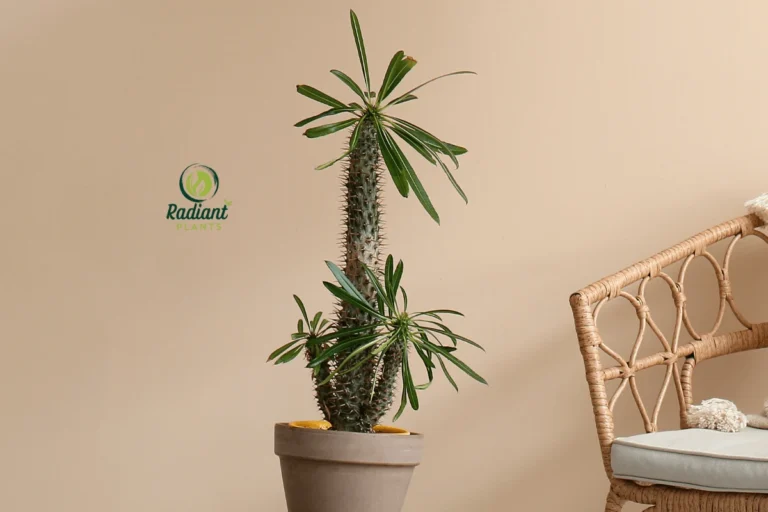Purple Calla Lily Plant Care Made Easy (Expert Tips)
If you’ve ever wished for a plant that combines elegance, rich color, and surprisingly easy care, the purple calla lily plant might just be your new obsession. With its velvety, deep-violet blooms and sculptural leaves, this flower has a way of stealing the spotlight—whether it’s brightening a patio container or elevating your indoor space.
The best part? You don’t need to be a seasoned gardener to grow it successfully. With the right light, soil, and watering routine, your purple calla lily can flourish year after year. In this guide, you’ll learn everything you need to keep this beauty thriving—from how much water it really needs, to whether it grows better indoors or outdoors, to simple mistakes that can cause drooping or stalled blooms. You’ll even discover the meaning behind those dramatic purple petals and how to multiply your plant through easy propagation.
Consider this your expert, plant-lover roadmap to growing a vibrant, healthy purple calla lily with confidence—without the guesswork.
Table of Contents
Table of Contents
What Makes the Purple Calla Lily Plant So Special?

The purple calla lily plant is one of those rare ornamentals that feels effortlessly luxurious. Its sculpted trumpet-shaped blooms and deep, velvety hues create a dramatic focal point, whether you’re styling an indoor arrangement or building a colorful outdoor garden bed. Unlike many flowering plants that require constant attention, calla lilies offer beauty with minimal fuss—making them ideal for both new plant parents and seasoned growers.
Part of their appeal comes from the richness of calla lily colors, with purple varieties standing out as the most striking. Their tones range from soft plum to nearly black, adding depth and sophistication to any plant collection. These blooms pair beautifully with other elegant ornamentals—think peonies, anemones, or tropical foliage—creating eye-catching contrasts and elevated arrangements.
What Does a Purple Calla Lily Mean?
Purple calla lilies carry a powerful symbolism rooted in passion, elegance, and royalty. Historically, purple has been associated with luxury and noble status, and these flowers still carry that aura today. They’re often chosen for weddings, anniversaries, and special celebrations because they evoke sophistication and emotional depth. In home décor, they’re a favorite for adding a touch of drama to minimalist spaces or complementing bold color palettes.
Gardeners also love using purple calla lilies in landscape design. Their sculptural form makes them a natural highlight in mixed borders, while their rich color provides contrast against green foliage or lighter flowers.
For more inspiration on pairing statement blooms, explore our guide on Flowering Peony Plants: 7 Stunning Varieties to Grow at Home, or see how color can elevate your interiors in How to Incorporate Red Plants into Your Interior Spaces.
How to Care for a Purple Calla Lily Plant (Complete Guide)

Caring for a purple calla lily plant is surprisingly simple once you understand what this elegant bloomer needs. Whether you’re growing calla lilies indoors or outdoors, the key is consistency—steady moisture, balanced light, and nutrient-rich soil. This calla lily care guide walks you through every step to keep your plant thriving season after season.
Light Requirements
Calla lilies love bright, indirect light. Indoors, place your plant near a window that receives filtered sunlight—east- or north-facing windows work beautifully. Avoid harsh midday sun, which can scorch the leaves. Outdoors, partial shade is best, especially in warm climates. Too much direct sun can cause the blooms to fade, while too little light may lead to leggy growth and fewer flowers.
If your indoor space lacks natural light, consider supplemental lighting. You can learn more in Grow Lights for Indoor Plants: Stunning Results Made Easy.
Soil & Potting Mix
For healthy growth, choose a well-draining, rich potting mix. A blend of peat moss, perlite, and compost offers the right balance of moisture and aeration. Calla lilies dislike soggy soil, so ensure your pot has drainage holes and avoid compacted mixes, which can suffocate the roots.
Watering Routine — Do You Water Calla Lilies Every Day?
Daily watering is not recommended. Instead, aim to keep the soil evenly moist, allowing the top inch to dry slightly before watering again. Overwatering is one of the most common issues for growing calla lilies, often leading to soft stems or bulb rot. During the dormant period, reduce watering significantly.
If you notice leaf discoloration caused by moisture imbalance, you may find our guide White Spots on Plant Leaves? Don’t Panic—Fix Them Now is helpful.
Fertilization & Bloom Boosting
Feed your calla lily once a month during the active growing season using a balanced, water-soluble fertilizer. This encourages vibrant blooms and strong foliage. Avoid high-nitrogen formulas, which can promote leafy growth at the expense of flowers.
With the right care, your purple calla lily will reward you with lush leaves and stunning, long-lasting blooms.
Growing Purple Calla Lily Plants Indoors

The purple calla lily plant can be a stunning addition to your indoor collection, especially if you love indoor flowering plants that offer both color and structure. With the right setup, calla lilies adapt beautifully to life inside your home and can bloom reliably each year. The key is to recreate the gentle, bright conditions they enjoy outdoors while maintaining steady moisture and airflow.
Are Calla Lilies Good Indoor Plants?
Yes—when given the proper light and humidity, calla lilies make excellent indoor plants. They thrive near bright, filtered windows where they receive plenty of indirect light. As indoor lilies, they don’t tolerate dry air very well, so homes with moderate humidity or regular misting offer the best environment. Their elegant, sculptural flowers also make them popular as decorative accents, fitting well into minimalist, modern, or even bold interior styles.
For more décor inspiration, check out Easy Ways to Style Your Cane Plant in Any Room, which pairs beautifully with calla lilies for layered greenery.
How to Keep a Calla Lily Plant Alive Indoors
To keep your purple calla lily thriving indoors, maintain consistent moisture—never soggy, but never bone-dry. Use a pot with drainage holes and choose a size that allows the rhizomes to breathe without being cramped. Good airflow is essential, especially in warm rooms, as stagnant air can lead to fungal issues.
Humidity is another key factor. Calla lilies perform best with slightly elevated humidity, so consider grouping them with other plants or placing a tray of pebbles and water beneath the pot. Rotate your plant every few weeks to encourage even growth and prevent leaning toward the light source.
If you’re building a pet-friendly indoor collection, explore our guide on Cat Safe Indoor Plants to complement your calla lily setup.
With steady care, your indoor calla lily will reward you with lush foliage and those signature deep-purple blooms—even far from the garden.
Can Purple Calla Lily Plants Be Grown Outdoors?
The purple calla lily plant isn’t just a stunning indoor beauty—it can also thrive outdoors when given the right environment. These elegant blooms make excellent additions to garden beds, borders, and container arrangements, especially if you love adding dramatic color to your landscape. As outdoor calla lilies, they offer long-lasting flowers, lush foliage, and a touch of tropical charm that elevates any outdoor space.
Can Purple Calla Lily Be Planted Outside?
Yes—purple calla lilies can be planted outside, especially in warm climates (zones 8–10). They thrive in mild to warm temperatures with bright, indirect sunlight or partial shade. If you live in a cooler region, you can still enjoy planting calla lilies outside, but they won’t survive freezing winters. Many gardeners simply grow them outdoors during the warm season and lift the bulbs before the first frost.
Choose a location with well-draining soil and avoid low spots where water tends to collect. Planting calla lilies outside in raised beds or containers is an excellent option if your yard has heavy clay or compacted soil.
Seasonal Care: Summer vs. Winter
In summer, keep the soil evenly moist but not soggy, and mulch lightly to retain moisture. Outdoor calla lilies appreciate regular watering during heat waves and benefit from a monthly balanced fertilizer to support continuous blooming. They perform exceptionally well in mixed flower beds alongside variegated foliage and rare ornamentals. For inspiration, explore Top 10 Variegated Plants to Brighten Up Your Space or 10 Stunning Rare Plants You Need to Grow: A Collector’s Guide.
Winter care depends on your climate. In cold regions, stop watering when the plant goes dormant, lift the rhizomes, and store them in a cool, dry place until spring. In warmer zones, simply cut back the foliage and let the plant rest naturally.
With proper seasonal care, your purple calla lily will return year after year, bringing vibrant color and elegance to your outdoor garden.
Common Mistakes to Avoid When Caring for a Purple Calla Lily Plant
Even though the purple calla lily plant is relatively easy to grow, a few common mistakes can quickly affect its health and blooming potential. Understanding these issues ahead of time helps you prevent stress, root problems, and lackluster flowers. Here are the most frequent calla lily problems and how to avoid them.
Overwatering & Bulb Rot
One of the biggest mistakes gardeners make is overwatering. Calla lilies prefer consistently moist soil—but never waterlogged conditions. When the soil stays too wet, the rhizomes begin to soften, leading to bulb rot, drooping stems, and eventually plant decline. Always check the top inch of soil before watering and ensure your pot has drainage holes. If you’re already dealing with soft or mushy roots, refer to Root Rot Treatment: 7 Proven Ways to Stop the Spread for a quick recovery plan.
Growing in Low Light
Calla lilies are light lovers, and placing them in dim conditions is a fast track to weak, leggy growth. Without enough brightness, your plant may produce fewer flowers or none at all. Ideally, aim for bright, indirect light indoors or partial shade outdoors. If the leaves begin to pale or turn yellow, it may indicate insufficient light or overwatering. Adjust the placement gradually to avoid shocking the plant.
Using Dense or Poorly Drained Soil
Another major mistake is using compacted or heavy soil. Dense soil retains too much water and suffocates the roots, which can lead to fungal issues or calla lily yellow leaves. Always choose a loose, well-aerated potting mix with ingredients like peat moss, perlite, and compost. If planting outdoors, amend the soil to improve drainage or use raised beds and containers.
For pest-related issues such as aphids—common on tender new growth—check out How to Get Rid of Aphids: 5 Mistakes to Avoid.
Propagation — How to Multiply Your Purple Calla Lily Plant
Propagating your purple calla lily plant is easier than many gardeners expect, and the best part is that it naturally rewards you with fresh new growth each season. Instead of relying on seeds—slow and unpredictable—your most reliable method is rhizome division, a simple hands-on process that helps you grow new calla lilies with the same color, vigor, and bloom quality as the parent plant.
Rhizome Division (Best Method)
Calla lilies grow from fleshy underground rhizomes, which slowly multiply as the plant matures. Over time, these rhizomes become crowded, reducing flower production and increasing the risk of common issues like yellow leaves or rot. Dividing them not only creates new plants but also keeps the parent clump healthy.
Start by gently lifting the rhizome cluster from the soil using your hands or a garden fork. Brush off the excess soil and look for natural “knuckles” or segments. Each piece should have at least one growing eye—this is where your new plant will sprout. Replant divisions in loose, well-draining soil, set horizontally, and cover with about 2 inches of soil. Water lightly to settle them in. For extra propagation inspiration, check out our guide on the Dragon Tail Plant, which also multiplies beautifully through division.
When to Propagate for Best Results
Timing makes all the difference. The best moment to propagate your purple calla lily plant is right after its dormancy period, typically late winter to early spring. During this stage, the rhizomes are firm, rested, and ready to push out vigorous new shoots.
Avoid propagating while the plant is actively blooming—stress during this period can slow growth and weaken the resulting offsets. Once replanted, keep your divisions in bright, indirect light and maintain slightly moist (not soggy) soil. For additional care basics that support healthy propagation, you can also explore our Arabian Jasmine Plant Care guide.
With each propagation cycle, you’ll enjoy more blooms, fuller pots, and a thriving calla lily collection that gets better year after year.
FAQs for your purple calla lily plant:
How do you care for a purple calla lily plant?
A purple calla lily plant needs bright, indirect light, consistently moist but not soggy soil, and well-drained potting mix to prevent bulb rot. Feed it every 2–3 weeks during the growing season and allow a short dormancy period after blooming. For moisture-related issues, see our Root Rot Treatment guide on RadiantPlants.com.
Are calla lilies good indoor plants?
Yes—calla lilies can thrive indoors if they receive enough bright, filtered light and live in airy, well-drained soil. Keep humidity moderate and avoid overwatering to prevent calla lily problems like yellowing leaves. Indoor growers often pair them with similar-care plants like those in our Arabian Jasmine Plant Care guide.
Can a purple calla lily be planted outside?
Absolutely. You can grow purple calla lilies outdoors in warm climates (zones 8–10). Plant the rhizomes in loose, rich, well-drained soil and place them where they get morning sun and afternoon shade. In cooler regions, lift and store rhizomes after frost. Outdoor planting also helps reduce common calla lily mistakes like low-light stress.
What does a purple calla lily mean?
Purple calla lilies symbolize elegance, royalty, transformation, and deep admiration. They’re often used in bouquets to represent dignity and spiritual beauty. While meaning doesn’t affect care, many gardeners feel more connected to their plants when they understand these symbolic layers.
Do you water calla lilies every day?
No—daily watering can cause bulb rot, one of the most common calla lily problems. Water only when the top inch of soil feels slightly dry, keeping the soil evenly moist but never soggy. If overwatering becomes an issue, refer to our Root Rot Treatment: 7 Proven Ways to Stop the Spread guide on RadiantPlants.com.
Caring for a purple calla lily plant is a rewarding experience, especially once you understand its simple needs. With the right balance of bright indirect light, well-drained soil, and mindful watering, your plant will reward you with elegant blooms and lush foliage season after season. Avoiding common mistakes—like overwatering, low-light placement, or compact soil—helps your calla lily stay vibrant and problem-free.
What makes this plant truly special is how easily it fits into any home or garden. Whether you’re growing it indoors as a striking decorative piece or adding drama to your outdoor beds, the purple calla lily brings sophistication and color wherever it’s placed. And because it propagates so easily through rhizome division, you can create more plants to share or expand your collection effortlessly.
If you’re feeling inspired to grow healthier, happier plants, keep exploring. Dive into our Root Rot Treatment guide if you struggle with soggy soil, or learn from our How to Get Rid of Aphids article to keep pests away naturally.
Ready to grow your most stunning purple calla lily yet? Explore more plant-care guides on RadiantPlants.com and continue building the plant-lover home of your dreams. 🌿✨







